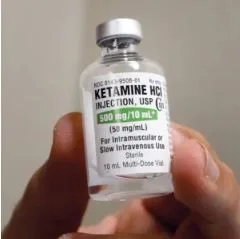Understanding the Use of Ketamine Troches in Mental Health Care
Ketamine has long been known for its role in anesthesia, but in recent years, it’s gained attention for something quite different, its potential to help treat mental health conditions. One particular form that’s becoming increasingly popular is the Ketamine troche, a small, dissolvable medication that can be taken at home under medical guidance.
For many people struggling with depression, anxiety, PTSD, and other mental health challenges, ketamine treatments have opened the door to relief when traditional options haven’t worked. But understanding how ketamine works, why troches are used, and what to expect is key before starting treatment.
What Is a Ketamine Troche?
A Ketamine troche is a small lozenge that dissolves in the mouth, typically under the tongue or between the cheek and gum. This method of administration allows ketamine to be absorbed through the mucous membranes in the mouth, providing a steady release into the bloodstream.
Troches are usually prescribed as part of a structured mental health treatment plan. While ketamine can also be given via IV infusions, nasal sprays, or injections, troches offer a convenient and non-invasive alternative especially for patients who may not have easy access to a clinic for regular infusions.
Some people might refer to them mistakenly as Ketamine torches, but the correct term is “troches.” The two sound similar, but the former is simply a mispronunciation.
Why Ketamine Is Being Used in Mental Health Care
Ketamine was originally developed in the 1960s as an anesthetic and pain reliever. Over time, researchers discovered that at much lower doses than used for anesthesia, ketamine could produce rapid antidepressant effects.
Unlike traditional antidepressants that may take weeks to show benefits, ketamine can often begin to improve mood within hours or days. This makes it particularly helpful for people with treatment-resistant depression or those experiencing suicidal thoughts.
Scientists believe ketamine works by affecting the brain’s glutamate system — more specifically, the NMDA receptors. This action helps promote the growth of new neural connections, which may explain why some patients experience a renewed sense of clarity, motivation, and hope after treatment.
Conditions Ketamine Troches May Help Treat
Research into ketamine’s mental health benefits is ongoing, but current evidence suggests that ketamine treatments including troches may be helpful for:
- Major depressive disorder
- Bipolar depression
- Generalized anxiety disorder (GAD)
- Post-traumatic stress disorder (PTSD)
- Obsessive-compulsive disorder (OCD)
- Certain chronic pain conditions with a mood component
It’s important to remember that ketamine is not a cure for these conditions, but rather a tool that can help reduce symptoms and improve quality of life.
How Ketamine Troches Are Used
Ketamine troche are typically prescribed after an initial course of in-clinic treatments, such as IV infusions or intranasal dosing. Once a patient shows a positive response, their doctor may transition them to at-home use with troches for maintenance.
A standard approach may look like this:
- Initial Assessment: A comprehensive evaluation to ensure ketamine is appropriate for the patient’s needs.
- Induction Phase: Usually involves multiple in-clinic doses over a few weeks to achieve symptom improvement.
- Maintenance Phase: Troches are prescribed for use at home, with dosage frequency varying from once or twice a week to less often, depending on response.
- Ongoing Monitoring: Regular check-ins with a healthcare provider to track progress, manage side effects, and adjust dosage as needed.
Troches are taken sublingually (under the tongue) or buccally (in the cheek pouch) and allowed to dissolve. This avoids the digestive tract and helps the medication work more efficiently.
Benefits of Ketamine Troches
People turn to ketamine troches for several reasons:
- Convenience: No need to visit a clinic for each dose.
- Consistent Relief: Helps maintain mood stability between in-office treatments.
- Flexibility: Dosing can be adjusted more easily based on individual needs.
- Non-Invasive: No needles or invasive procedures.
For those living in remote areas or balancing busy schedules, having access to troches can make mental health treatment more accessible.
Potential Side Effects
Like all medications, ketamine troches can cause side effects. Common ones may include:
- Mild dizziness or lightheadedness
- Changes in perception (visual or auditory)
- Nausea
- Fatigue after dosing
- Temporary increase in blood pressure
These effects typically wear off within a couple of hours. It’s crucial to take troches in a safe, comfortable environment, ideally with someone nearby, especially when first starting treatment.
Long-term safety data is still being studied, but when used under medical supervision, ketamine has been found to be generally well-tolerated.
Safety Considerations
Ketamine should only be used under the guidance of a licensed healthcare provider familiar with its psychiatric applications. Patients with certain medical conditions — such as uncontrolled high blood pressure, a history of psychosis, or substance use disorder — may not be good candidates for ketamine therapy.
It’s also important to note:
- Never take more than prescribed.
- Store troches securely away from children and pets.
- Avoid driving or operating heavy machinery until the effects fully wear off.
Myths and Misunderstandings About Ketamine Troches
Because ketamine has been used recreationally, some people assume it’s unsafe or addictive in all contexts. In reality, when prescribed in low, controlled doses for medical purposes, ketamine is very different from illicit use.
Another common misunderstanding is the name some people say Ketamine torches, but again, the correct medical term is “troches.” Troches are simply a dosage form, much like tablets or capsules, but designed to dissolve in the mouth for more direct absorption.
The Role of Therapy Alongside Ketamine Treatment
While ketamine can quickly improve mood, it’s not meant to be a stand-alone solution. Many clinics recommend pairing ketamine treatments with talk therapy, such as cognitive behavioral therapy (CBT) or trauma-focused therapy.
The period after dosing, when the brain is more adaptable and open to change, can be an ideal time for therapy. This combination may help patients build healthier thought patterns and coping strategies, leading to more lasting benefits.
Accessibility and Quality of Ketamine Troches
Access to ketamine troches varies depending on location and local regulations. In some areas, specialized mental health clinics provide prescriptions, while in others, telehealth services make it possible for eligible patients to receive treatment remotely.
Ketamine Troches available for treatment for mental health issues. Our ketamine troche is of the best quality and we ship worldwide, ensuring patients can get the support they need no matter where they live. This accessibility is helping many people who once had no viable treatment options find a new path forward.
Final Thoughts
Ketamine troches represent an exciting development in mental health care, particularly for people who haven’t found relief with traditional medications. They offer a convenient, effective, and often life-changing option for managing depression, anxiety, PTSD, and more.
While they’re not for everyone, and they do require careful medical oversight, the growing body of research is promising. If you or someone you know is struggling with mental health challenges and hasn’t had success with other treatments, it may be worth discussing ketamine therapy including troches with a qualified provider.





